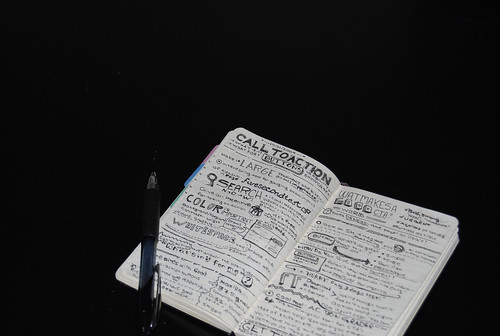A dictogloss is a remarkably simple idea that I have found to be very effective in improving a number of language skills. It is defined on the British Council Teaching English website as:
"...a classroom dictation activity where learners are required to reconstruct a short text by listening and noting down key words, which are then used as a base for reconstruction."
There are many benefits to this particular activity, especially since it involves the student practicing all four language skills. They begin by listening, followed by note taking, text reconstruction and discussion. At the end they will be able to practice reading too. There are few activities that can engage such a variety of skills in such a short period.
However, the traditional dictogloss is not of much use in a one to one class. Collaboration and discussion are essential ingredients, and in this case the teacher cannot step in. I thought this was a shame, so I decided to see if I could adapt this most useful of tasks by doing the following.
Before the class, find a suitable recording. It should be pitched just below their normal level, as this is not an easy task. I chose a news story from http://www.breakingnewsenglish.com/ for my intermediate student. Make sure you have a printed version as well.
At the beginning of the task, the student needs to be aware of what the final product is intended to be. Unlike the traditional activity, we can't surprise them, as they need to know what they are taking notes for from the beginning. They need to know that you want them to select the key points as they see it, but that they are not required to add extra information or opinion.
The activity then proceeds as follows:
1) Tell the student that they are going to hear a news story, and they should just listen. Play the news story.
2) Play again, and ask the student to take notes on the main points.
3) After they have finished, give the S a minute or two to tidy and finish their notes.
4) Play it again. Ask them to expand on their notes from before. Then give them another minute to finish.
5) Play it again if necessary (it normally is for me).
6) Ask the student to finish their summary. Offer to give names or places if they are required.
6) Give the student the printed version. Ask them to compare and discuss similarities & differences. Would they change anything if they could?
7) Offer to check spelling / grammar etc for the next class if they wish.
If you think it's worthwhile for the student, this could be done as the first stage of a process writing project. The summary they have written could be used as a first draft and then worked upon.
It's an activity that needs to be repeated to be really effective. Done regularly, the student should find themselves able to take more productive and useful notes, and able to create better and better summaries.
Useful links:







Wow James, didn´t know you had a blog, this is great! Ariane
ReplyDeleteThanks Ariane!
ReplyDeleteHi James,
ReplyDeleteI'd been looking forward to this! What can I say? Great! I've only ever used dictogloss with classes, can't wait for my next one-to-one class to give this a go :)
Thanks!
Ceri
@Ceri - thanks for your feedback. I hope it's as effective for you as it was for me. Be sure to let me know how it goes.
ReplyDeleteGreat idea on adapting this and a nice reminder that it may be a bit much to ask one student to reconstruct a text alone. Came across this when I typed "dogme" and "dictogloss" into Google and it's a pretty good reflection of the type of thing I was looking for!
ReplyDeleteThanks Christina, you really went back into the vault on this one! Hope it's useful.
ReplyDelete